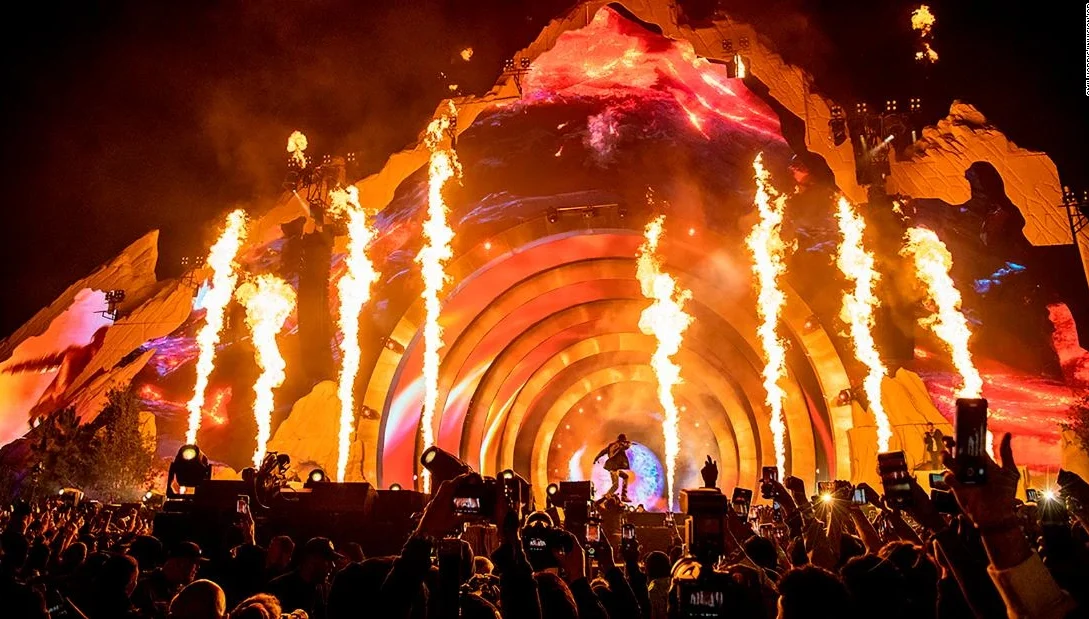I’ve been to my fair share of large-scale events, from music festivals and sports games to bustling parades and cultural gatherings. While these experiences have brought me countless memories and moments of joy, they’ve also taught me a thing or two about the importance of crowd management and control. Ensuring safety in such crowded places is no walk in the park, but it’s essential for everyone’s well-being. In this article, I’ll share some insights and experiences I’ve gathered over the years, as well as the key strategies employed to make these events as safe and enjoyable as possible.
Understanding the Scale of the Challenge

When you walk into a massive event with tens of thousands of people, it’s easy to get swept up in the excitement and forget about the logistics behind the scenes. But the reality is, that managing such a large crowd is a complex undertaking that requires careful planning, coordination, and execution.
One of the first things to consider is the physical space available. Different venues come with their unique challenges, whether it’s a massive open field for a music festival or a confined stadium for a sporting event. The layout, the infrastructure, and the capacity of the venue significantly affect how the crowd can be managed.
Now, imagine all the people attending these events – each with their own needs, expectations, and behaviours. This is where things get interesting. Some may be die-hard fans who want to be as close to the action as possible, while others may be more concerned with finding a good spot to enjoy a drink and socialize. Some might be first-time attendees, while others are seasoned veterans who know the ropes.
Planning and Preparation

A successful large-scale event begins with meticulous planning and preparation. I’ve seen firsthand the chaos that can ensue when these steps are rushed or overlooked. Event organizers, local authorities, and security teams must collaborate to address various crucial aspects of crowd management:
- Capacity Assessment: Determining the maximum number of attendees a venue can safely accommodate is the first step. This is based on factors like the venue’s size, layout, and available exits. Overcrowding is a recipe for disaster, and I’ve been in situations where the crowd became uncomfortably dense due to overselling or poor capacity calculations.
- Traffic Flow: Establishing clear and efficient pathways for people to enter and exit the venue is essential. Poorly designed entrance and exit points can lead to bottlenecks, causing frustration and increasing the risk of accidents. Event organizers should also consider transportation options, like shuttle services or parking facilities.
- Security Measures: Security personnel are a visible presence at any large-scale event. Their role is not only to respond to security threats but also to maintain order and provide assistance to attendees. Metal detectors, bag checks, and trained security staff help deter potential troublemakers.
- Communication: Effective communication is key to crowd management. Public address systems, digital signage, and even smartphone apps can be used to relay important information to attendees. These channels can provide updates on scheduling changes, weather warnings, and emergency procedures.
Safety First: Crowd Control Tactics

Even with thorough planning, large crowds can be unpredictable, and that’s where the art of crowd control comes into play. Over the years, I’ve seen some smart strategies employed to maintain order and ensure everyone’s safety:
- Barricades and Fencing: These are often used to create designated areas, preventing attendees from wandering into restricted or unsafe zones. They can also be useful in forming queues, especially at entry points.
- Staggered Entry Times: By dividing the entry process into time slots or phases, event organizers can reduce the initial rush of attendees and prevent overcrowding. It’s a technique I’ve noticed at music festivals where they issue different wristband colours for different entry times.
- Designated Areas: Organizers often set up specific zones for different purposes – like family areas, VIP sections, and medical stations. These not only help cater to different attendees’ needs but also reduce confusion and conflicts.
- Security Teams: Well-trained security personnel are crucial. Their presence alone can discourage unruly behaviour, and their ability to de-escalate conflicts is invaluable. I’ve seen security teams employ a combination of visibility, approachability, and firmness to keep the peace.
- Emergency Evacuation Plans: Nobody wants to think about it, but emergencies can happen. Having a clear evacuation plan in place, complete with designated exits, muster points, and communication systems, can make all the difference in keeping attendees safe.
Crowd Behavior and Management

Understanding crowd behaviour is another crucial aspect of crowd management. Crowds can take on a life of their own, and organizers must anticipate and address various behaviours to ensure safety. Over the years, I’ve observed several common crowd behaviours and the ways they can be managed:
- Mob Mentality: In a large crowd, people can be influenced by the actions of those around them. If a few individuals start acting recklessly, it can lead to others following suit. Security teams and event staff must be prepared to identify and neutralize these situations quickly.
- Aggression and Conflict: Tempers can flare in crowded spaces, often over trivial matters. Event staff should be trained to mediate conflicts and maintain a strong but non-confrontational presence.
- Crushes and Surges: The density of the crowd can change rapidly, leading to situations where people can be pushed or crushed. Effective crowd control measures, such as barricades and proper queuing, can help prevent these scenarios.
- Medical Emergencies: With large crowds, medical issues are almost inevitable. Having trained medical staff and well-marked medical stations can make a world of difference in providing prompt assistance.
- Lost and Disoriented Attendees: It’s easy to get lost in a sea of people, especially in unfamiliar surroundings. To address this, I’ve seen events use clear signage, information kiosks, and even smartphone apps to help attendees find their way.
Conclusion
Large-scale events are a unique fusion of excitement, energy, and potential chaos. Ensuring safety in such environments is like performing a delicate balancing act. It requires meticulous planning, proactive crowd control tactics, and a deep understanding of crowd behaviour.
I’ve attended events that struck this balance beautifully. They left me with wonderful memories of shared experiences with friends and strangers, all while feeling safe and secure. But I’ve also been to events where the lack of crowd management marred the entire experience, leading to frustration and, at times, genuine danger.
Event organizers, local authorities, and security personnel all play crucial roles in creating a safe environment for attendees. They must work together to anticipate and address the challenges of large crowds. With the right planning and execution, we can continue to enjoy the thrill of large-scale events while ensuring that everyone goes home with smiles on their faces, rather than bruises or disappointment.
As someone who loves attending these events, I can’t stress enough how important it is to prioritize safety. When it’s done right, crowd management and control can make a massive difference in how we experience and remember these incredible gatherings. So, here’s to more memorable moments in the future – ones where we can dance, cheer, and celebrate, knowing that we’re in good hands.








